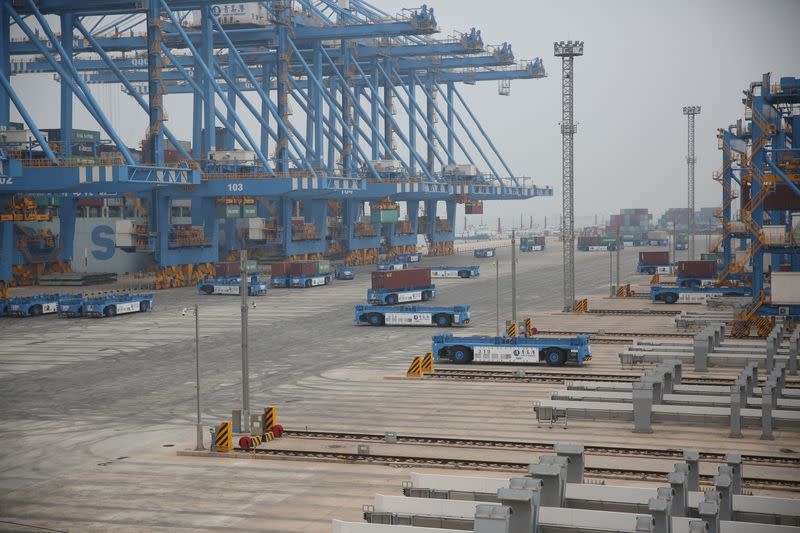Exports from China fell sharply in March, while imports also suffered an unexpected drop, customs data released on Friday showed.
Both trade figures came in below market forecasts by big margins, with shipments from China down 7.5% year-on-year, and imports declining by 1.9%.
The latest figures highlight the tough task that policymakers face as they try to bolster a shaky economic recovery.
ALSO SEE: More Stimulus Seen in China After Soft Consumer, Producer Prices
Export shipments suffered the biggest slump since August last year, which was a lot higher than a 2.3% decline forecast in a Reuters poll of economists. Exports had risen by 7.1% in the January-February period.
The nation’s exporters endured a tough period for much of last year due to soft overseas demand and tight global monetary policy. With the US Federal Reserve and other developed nations showing no urgency to cut interest rates, Chinese manufacturers may be faced with a further period of challenges as they try to shore up goods sales overseas.
A China Beige Book survey said the recent improvements in business conditions, including better corporate revenue, profits and capital spending, were “more of a return to mediocre from genuinely poor”.
Analysts warn that Western concerns over China’s overcapacity in some industries may bring more trade barriers for the world’s manufacturing hub.
The March figure for imports (down 1.9%) following 3.5% growth in the first two months.
It underlined the sluggish domestic demand conditions, which were also highlighted by Thursday’s data showing consumer inflation had cooled more than expected last month.
China’s economy got off to a relatively solid start this year after policymakers rolled out support measures to revive household consumption, private investment and market confidence since the second half of 2023.
Uneven growth
Yet, growth in the Asian giant remains uneven and analysts don’t expect a full-blown revival anytime soon mainly due to a protracted property sector crisis.
Rating agency Fitch cut its outlook on China’s sovereign credit rating to negative on Wednesday, citing risks to public finances as the economy faces increasing uncertainty in its shift to new growth models.
The economy likely grew 4.6% in the first quarter from a year earlier — the slowest in a year despite signs of stabilisation, another Reuters poll showed on Thursday, maintaining pressure on policymakers to unveil more stimulus measures.
Some analysts say the central bank faces a challenge as more credit is flowing to production than into consumption, exposing structural flaws in the economy and reducing the effectiveness of its monetary policy tools.
On the fiscal front, China plans to issue one trillion yuan in special ultra-long term treasury bonds to support key areas. It also raised the 2024 special bond issuance quota for local governments to 3.9 trillion yuan from 3.8 trillion yuan in 2023.
Moreover, in an attempt to revive demand, the cabinet last month approved a plan aimed at promoting large-scale equipment upgrades and sales of consumer goods.
The head of the country’s economic planner estimated the plan could generate market demand of over five trillion yuan annually.
- Reuters with additional editing by Jim Pollard
ALSO SEE:
Excess Capacity Claim is Wrong, We’re More Competitive: China
Fitch Cuts China Outlook to Negative, Citing Debt, Growth Risks
Foreign Orders Lift China’s Manufacturing Again in March: Caixin
China’s Factory Output, Retail Sales Both Rise in First Two Months
China Sees Better Than Expected 2024 Trade Growth
China’s Big Guns Defend GDP Target, Explain Economic Policies
Doubt on China’s Plan to Lift Consumption, Maintain Growth
PM Pledges to Revitalize China’s Economy, Aims at 5% Growth
China Asks Banks to Roll Over $13tn Local Debt at Lower Rates
























